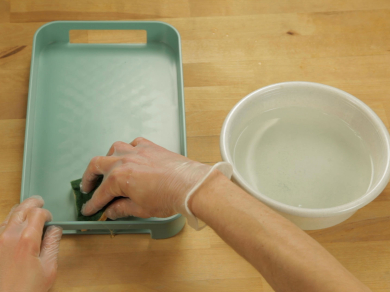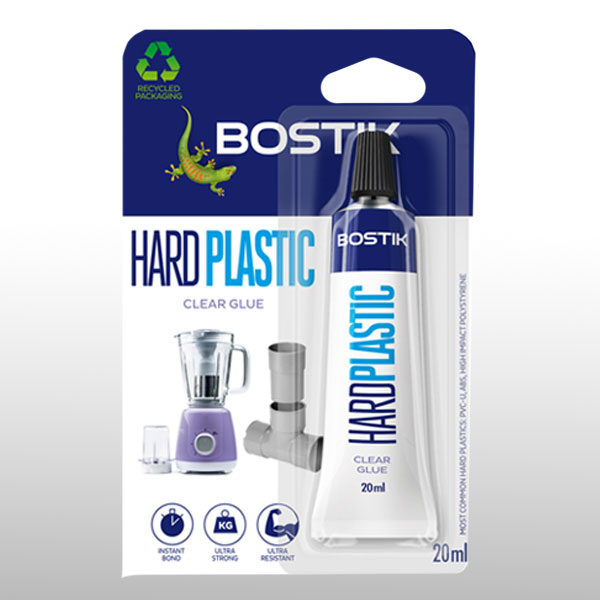How to remove plastic glue?
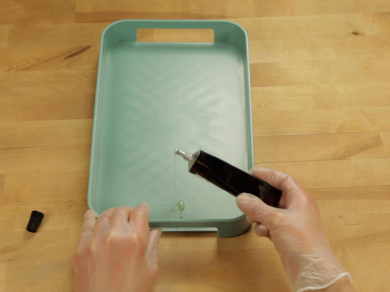
Whether for hard or soft plastics, plastic adhesives become extremely strong when dry. Therefore, it can be difficult to remove glue stains, mainly when dry. Here are some tips on how to deal with it.
Got a plastic glue stain problem? Let’s see how to solve it effectively
We can all be a little clumsy when we're into some DIY work. Using glue can make it drip, spill, or splash, causing unwanted marks in a hurry. Plastic adhesives are highly effective, especially when they are dry and become extremely strong. Removing a plastic glue stain can be complicated if you don't act quickly. But this won’t be a problem anymore; thanks to our step-by-step guide, learn how to react effectively and with the right tools. Get rid of any unwanted plastic glue stain. Don't bin it, clean it! And become an everyday #repairhero!
How to remove plastic glue – a step-by-step guide
Option 1: remove fresh plastic glue
- As always, the first thing to do is to protect yourself and your work surface. Let’s avoid a new drama.
- Once the environment is secure, take the object that needs intervention and locate the areas that need some excess fresh plastic glue cleaning.
- Take your bottle of acetone with you; it is advisable to use a small amount on the object to be cleaned in an inconspicuous corner to ensure that it is not further damaged. That would be a shame.
- You can now dab the stain with a cloth soaked in acetone. Note that you can do this with nail polish remover as long as it contains acetone.
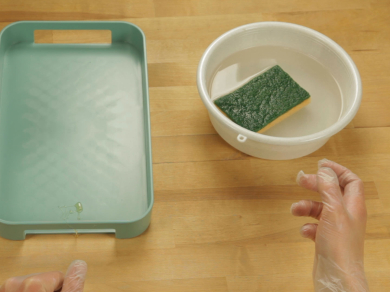
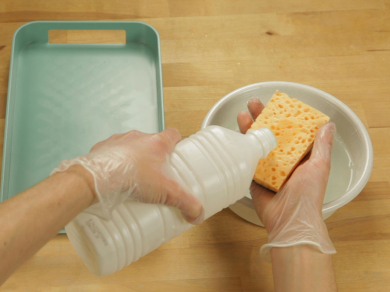
Option 2: remove dried plastic glue
- It is often repeated that dried glue of any kind is always more difficult to remove. So don't skimp on prevention, and systematically protect your work surface (and yourself, of course).
- If, despite all your efforts to avoid an accident, one does occur, don't panic and grab a bottle of acetone.
- Test a small amount of your solvent on an inconspicuous corner of the object to ensure it won't get damaged any further.
- Dab the stain with a cloth soaked in acetone. Note that you can do this with nail polish remover as long as it contains acetone.
- Quiet the same as for fresh plastic glue, isn’t it?
Everything you need to remove plastic glue
- Protective glasses to protect yourself
- An apron to protect your clothes
- Rubber gloves to protect yourself and your manicure
- A cloth and acetone to remove excess glue from the furniture.
Glue it right – how to use glue without little accidents
By following these simple, preventative tips, you could save yourself reading our articles about "how to remove glue from an unwanted surface". For any glueing you have to do, make sure that the surfaces to be glued are dry, clean, free of grease or dust. It's worth remembering. For your part, protect yourself by wearing safety goggles and rubber gloves. And watch your clothes by wearing an apron. Finally, save your worktop with a covering that won't give you a nervous breakdown if it gets stained with glue. Is it necessary to remind you always to read the use instructions of the products you are handling? You should also pay attention to how to store your opened tube of glue. And last but not least, follow the sorting instructions on the packaging of the Bostik products you are using, and don't just throw your adhesive anywhere; think about your safety and the safety of our planet.
Which glue do you need?
At Bostik, there is an adhesive for every need. For rigid plastic surfaces, use Bostik Hard Plastic as once dry, this adhesive provides a strength that is at least as good as the original material.
